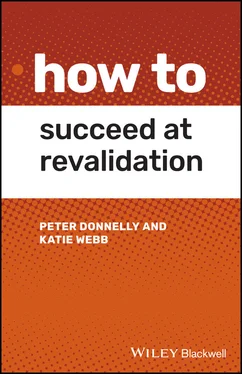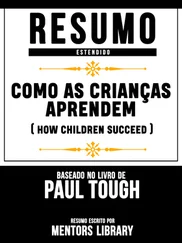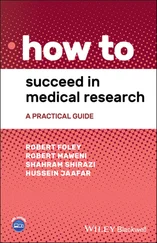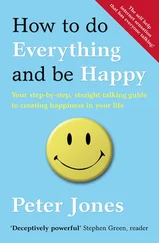We maintain the register of nurses and midwifes who meet the requirements for registration in the UK, and nursing associates who meet the requirements for registration in England.
We set the requirements for the professional education that supports people to develop the knowledge, skills and behaviour required for entry to, or annotation on, our register.
We shape the practice of the professional on our register by developing and promoting standards including our Code, and we promote lifelong learning through revalidation.
Where serious concerns are raised about a nurse, midwife or nurse associate’s fitness to practice, we can investigate and, if needed, take action.
The NMC has published a detailed code of practice, “the Code,” which forms the reference point for revalidation of nurses. Table 2.1shows the requirements for and examples of the supporting evidence for each registrant over a three‐year cycle in order to revalidate.
Table 2.1 Revalidation: requirements of a nurse and examples of supporting evidence.
| Requirements over a three‐year cycle |
Supporting evidence |
| 450 hours of practice for each registration (if dual registration requires 900 hours) |
Record of practice hours Scope of practice Details of the work setting |
| 35 hours of continuing professional development (of which 20 hours must be participatory) |
Details of the CPD recorded including: The CPD method used (e.g. online, self‐learning) Each CPD session mapped to the code |
| Five pieces of practice‐related feedback |
Notes on the feedback Details of how feedback used to improve practice |
| Five written reflective accounts |
Written reflection on CPD/feedback or an event/experience Describe relevance to the code |
| Reflective discussion |
Record of a reflective discussion NMC number of the person |
| Health and character |
Self‐declaration of health and character |
| Professional indemnity |
Evidence of appropriate professional indemnity |
| Confirmation |
Following face‐to‐face or video meeting, a record of the conversation with an appropriate “confirmer,” e.g. line manager or a GP |
As we will see in later chapters, this process shares many of the elements of the current revalidation requirements for doctors.
The origins of the profession of physiotherapy are thought to date back as far as Hippocrates, the ancient Greek physician who lived during Greece’s Classical period (c. 400 BCE). He advocated the use of physical therapies to treat a number of ailments.
The profession began in earnest in 1813 when Per Henrik Ling founded the Royal Central Institute of Gymnastics in Sweden. Ling recognized the benefits of massage, physical manipulation and exercise, not just in treating ailments but in the prevention of disease.
The Society of Trained Masseuses was established in 1894 in order to protect the profession from falling into disrepute as a result of a number of newspaper articles. The society’s emphasis was on the medical model for massage training and high academic standards. By 1900 the Society progressed to obtaining the legal status of a professional organization and became the Incorporated Society of Trained Masseuses. This helped to improve the public’s perception of the profession.
The society was granted the Royal Charter in 1920 and joined with the Institute of Massage and Remedial Gymnastics. The society and the profession grew and in 1944 it became the Charted Society of Physiotherapy (CSP), its name to this day.
Then in 1976, the society was also recognized as an independent trade union. It was not until 1977 that the Department of Health recognized professional autonomy for physiotherapists, and the following year a change in law allowed direct referrals to physiotherapists without the need for a medical referral.
In 1992 the physiotherapy profession became an all‐graduate entry profession. The Health Professionals Council (HPC) replaced the Council for the Professions Supplementary to Medicine (CPSM), and physiotherapy came under the regulation of the HPC in 2003. This established legal protection for the titles of “Physiotherapist” and “Physical Therapist.”
The history of the physician dates back as far as the history of mankind. In 3500 BCE the Egyptians were documenting the “medicine” of the time. At that time the practice of medicine was intertwined with religious and magical beliefs, customs and practice.
Around 800 BCE, Homer talked of drugs being administered along with magical spells. A range of minerals, vegetation and animal parts were used to make up the drugs. In many cultures those who dealt with diseases were priests or holy men.
One of the earliest recorded calls for regulation in the UK was in 1421. Physicians presented a petition to parliament canvassing to ensure that anyone practicing as a physician should have appropriate qualifications.
In 1511 a statute placed the regulation of physicians in the hands of the Bishops in England on the basis that the clerics were, in general, the best educated of any social group in the population. So, even in the sixteenth century, medicine and the practice of religion remained closely aligned.
Before the Medical Act of 1858 the organizational structure of medicine in the UK was close to a state of chaos. By the early 1800s there were 19 different licensing bodies in the UK with a whole range of rules governing recognition of physicians. Medical training varied from basic apprenticeship in an apothecary shop to classical university education with a degree in medicine.
There were a wide number of “quacks” and drug peddlers practicing with no legal sanction against them. On the other hand a physician based in London could be disciplined by the Royal College of Physicians (RCP) for preparing and selling a prescription.
To understand the nature and development of this near‐chaotic situation, it is important to understand the historical developments. One key issue was the separation of “medical men” into three orders: Physicians, Surgeons and Apothecaries. These orders fell under the Royal College of Physicians (RCP), the Royal College of Surgeons (RCS) and the Society of Apothecaries respectively. These three orders of medical practice very much reflected the social divisions of society at that time. Each group had their own legal rights and duties, traditional and historical privileges, exclusivity of membership and functions, and monopoly on activities.
The oldest medical organization in the UK was the RCP in London who received the Royal Charter in 1518. It is important to understand that at that time, the scope of practice of a Physician is most similar to what we would now consider to be exclusively internal medicine. Fellows of the Royal College had to practice within strict limitations and, for example, they could not belong to any other medical organization. Neither could they practice surgery or act as an apothecary. This meant Fellows were prohibited from making or selling medicines even to their own patients. There was a requirement for a Fellow of the Royal College to act only as a pure physician examining, diagnosing and prescribing medication which was then dispensed by the apothecary. The rules were such that if a Physician decided to start practicing surgery or dispensing drugs, he had to resign his Fellowship or face expulsion. The RCP fought hard to maintain the distinction between Physicians and other orders of practitioners such as surgeons and apothecaries.
Читать дальше




![Коринн МакКей - How to Succeed as a Freelance Translator [calibre 3.46.0]](/books/402693/korinn-makkej-how-to-succeed-as-a-freelance-transl-thumb.webp)







